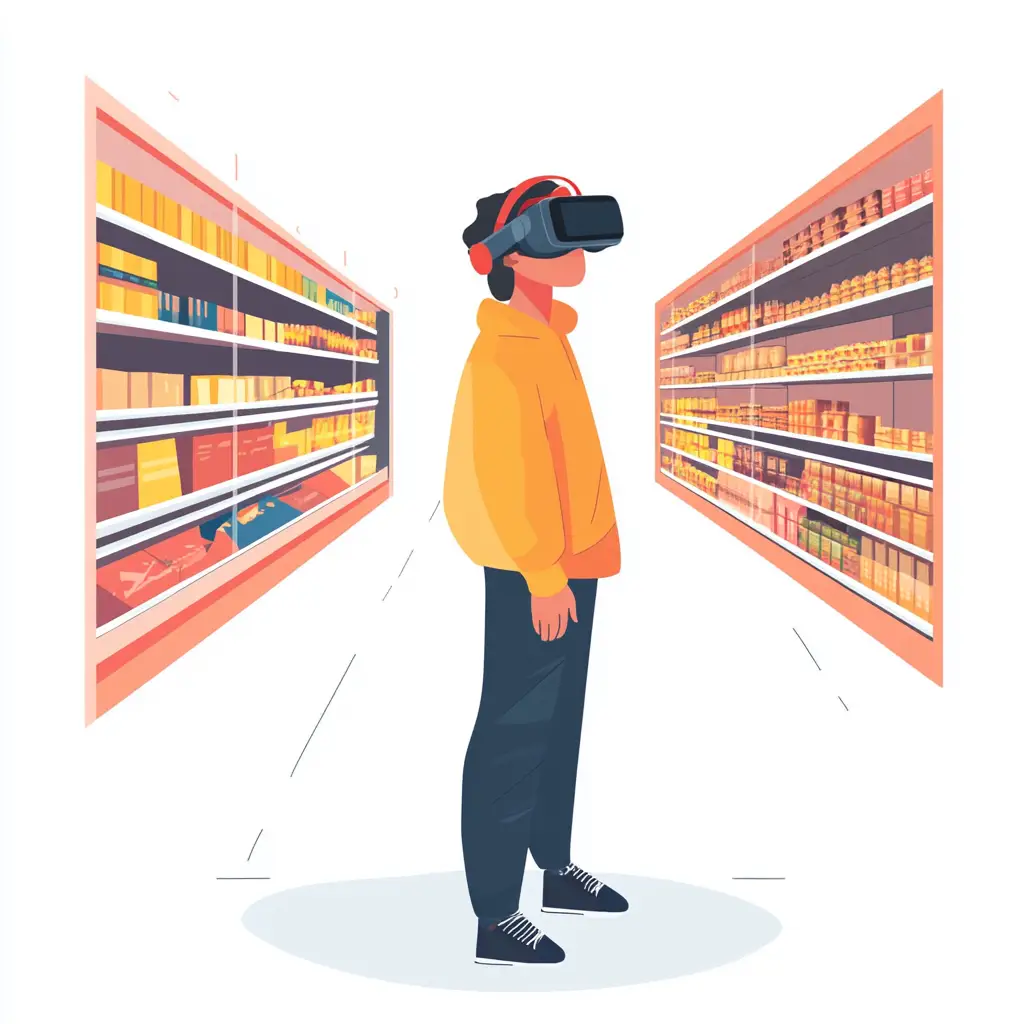Consumer Insights
Sensory Research Lab
Sensory research covers everything humans can smell, taste, and feel, making it crucial for understanding consumers sensory preferences across products in FMCG, fragrance, cosmetics, and food & beverages. Through a range of biosensors, iMotions Lab captures real-time emotional and physiological reactions, revealing where attention goes, how products are perceived, and what drives satisfaction. These insights empower brands to refine designs and marketing strategies, boosting consumer loyalty and achieving market success.






Sensory Research with Biometrics
Fragrance and Aromas
Flavors and Emotions
Pleasurable Textures
Fragrance & Aroma Research
Fragrance and aroma research explores how scents interact with sensory perceptions to evoke emotional and physiological responses. It assesses factors like scent intensity, emotional impact, and scent longevity to fine-tune fragrance experiences that resonate with consumers. Using biosensors like EEG, ECG, GSR, and Voice Analysis, researchers capture real-time data on emotional arousal, mood shifts, and sensory impressions. This approach enables precise adjustments, helping brands create fragrances that enhance consumer satisfaction and emotional connection.
How the Lab Works

- Motions Lab enables efficient study setup, data collection, and analysis in a single platform to assess factors like olfactory perception, emotional response, and scent preference.
- By integrating hardware such as EEG, ECG and GSR sensors, iMotions provides synchronized data to analyze metrics like emotional arousal, memory recall, and overall sensory experience.
- iMotions integrates with survey platforms like Qualtrics, allowing researchers to gather subjective insights on fragrance appeal and emotional impact alongside physiological and behavioral data.
Feature Highlights
iMotions’ platform empowers researchers to explore fragrance research through advanced biosensors and multimodal data integration. These features enhance every phase of fragrance research, enabling targeted product development by evaluating physiological and emotional responses to scents and aromas.
Electroencephalography (EEG)
Capture real-time brain activity, revealing emotional and cognitive responses to fragrances, aromas, and scents. EEG helps researchers identify scents that evoke desired moods, enhance relaxation, or stimulate positive associations, guiding fragrance formulation.
Cardiovascular Responses (Electrocardiography)
In fragrance research, ECG monitors heart rate changes to reveal physiological responses to scents, helping researchers assess emotional intensity. This data provides valuable insights into consumer preferences, highlighting which fragrances evoke stronger connections and appeal for targeted product development.
Galvanic Skin Response (GSR/EDA)
Measure physiological arousal, capturing how intensely consumers react to fragrances and scents. This insight helps brands understand emotional connections and refine fragrance formulations for desired effects.
Voice Analysis
Voice Analysis in fragrance research provides a valuable layer of understanding during post-data collection interviews or think-aloud sessions. By capturing changes in tone, pitch, and stress, it reveals underlying emotional responses and sensory impressions that may not be easily verbalized, enriching traditional feedback with objective, nuanced data on how consumers truly perceive olfactory inputs.
Data Visualization and Analysis
Simplify the interpretation of complex fragrance data for individual and aggregated responses using intuitive visualization tools. Whether analyzing emotional impact, scent preferences, or sensory intensity, these insights provide essential guidance for refining fragrance formulations and tailoring products to resonate deeply with consumers.
Flavor Research
Researchers use iMotions to detect emotions tied to food and beverage preferences by measuring facial expressions throughout the experience-seeing, smelling, and tasting-to predict flavor appreciation. Electrodermal activity (EDA) gauges aroma appreciation, while EEG explores brain activity related to food choices and cravings. These objective biosensors offer invaluable insights, helping researchers overcome the subjective biases often found in self-reported surveys.
How the Lab Works

- iMotions Lab is the core platform for flavor research, offering seamless experiment design, data collection, and analysis within one software.
- Connecting external hardware and sensor feeds, iMotions captures synchronized data on taste perceptions, preferences, and physiological reactions for a deeper understanding of consumer flavor experiences.
- iMotions integrates with Qualtrics and other survey tools, along with built-in features, to collect data on sensory perceptions, taste preferences, and consumer satisfaction.
Feature Highlights
iMotions’ platform enables researchers to investigate how various flavors evoke unique emotional responses using advanced biosensors and seamless data integration. These tools provide critical insights into consumer preferences, decision-making processes, and sensory attention, allowing researchers to refine flavor profiles and optimize products to enhance consumer satisfaction and engagement.
Electrocardiography (ECG)
In flavor research, ECG monitors heart rate changes to capture physiological responses, revealing the emotional intensity linked to taste experiences. This data identifies flavors that create strong emotional connections, guiding targeted product development.
Galvanic Skin Response (GSR/EDA)
GSR measures physiological arousal, helping researchers understand the intensity of consumer reactions to various flavors. These insights enable brands to fine-tune flavor elements to evoke desired sensory effects, enhancing the tasting experience.
Facial Expression Analysis
The face never lies! Facial Expression Analysis applied in flavor research captures real-time emotional reactions-such as satisfaction, disgust, or boredom-during tasting experiences. By identifying subtle facial cues, researchers gain objective insights into consumer preferences, helping refine flavor profiles to align with emotional responses and enhance product appeal.
Voice Analysis
Voice Analysis enhances flavor research by capturing tone, pitch, and stress during post-tasting interviews or think-aloud sessions. It uncovers nuanced emotional reactions that may not be easily verbalized, adding depth to feedback with objective insights into taste perception.
Texture Research
Texture research in sensory studies examines how tactile elements impact consumer comfort, satisfaction, and engagement. By focusing on factors like smoothness, roughness, and elasticity, it uncovers how textures influence both physical and emotional responses. Tools like EEG and GSR measure physiological reactions to different textures, while eye-tracking captures visual focus on tactile surfaces. This data helps refine textures to enhance sensory appeal, supporting product designs that resonate with consumers and elevate their overall experience.
How the Lab Works

- iMotions Lab is the central platform for texture research, offering an all-in-one solution for study setup, data collection, and analysis through a single PC software.
- By integrating hardware such as EEG, ECG and GSR sensors, iMotions provides synchronized data to analyze metrics like emotional arousal, memory recall, and overall experience of textural perception.
- iMotions integrates with survey platforms like Qualtrics and offers built-in survey tools, allowing researchers to gather feedback on textural and tactile sensations.
Feature Highlights
iMotions’ platform empowers researchers to delve into texture testing by leveraging advanced biosensors and seamless data integration. These tools allow for precise evaluation of how various textures impact sensory perception, guiding iterative improvements in product design to optimize tactile satisfaction and consumer appeal.
Electroencephalography (EEG)
Capture real-time brain activity to reveal emotional and cognitive responses to textures. EEG allows researchers to identify specific textures that evoke desired moods or stimulate positive associations, guiding texture optimization in product development.
Galvanic Skin Response (GSR/EDA)
Measure physiological arousal to understand consumers’ intensity of reaction to various textures. This insight helps brands optimize tactile elements to evoke desired sensory effects and enhance user experience.
Cardiovascular Responses (Electrocardiography)
In texture research, ECG tracks heart rate changes to reveal physiological responses, assessing emotional intensity related to tactile experiences. This data highlights textures that create stronger emotional connections, assisting in targeted product development.
Voice Analysis
Voice Analysis adds a layer of understanding in texture research during post-data collection interviews or think-aloud sessions. By capturing changes in tone, pitch, and stress, it reveals nuanced emotional responses that may not be verbally expressed, enriching feedback with objective insights into tactile perception.
Data Visualization and Analysis
Streamline the interpretation of complex texture data for individual and aggregated responses using intuitive visualization tools. Whether analyzing emotional impact, texture preferences, or sensory intensity, these insights guide product refinements, ensuring textures align with consumer expectations.
For Measurable Improvements
The iMotions platform supports sensory research at every stage, enabling iterative improvements for Fragrances, Flavors, and Textures throughout industries.
Fragrance Development
Fragrance development leverages sensory research capabilities to analyze and optimize scent profiles, ensuring products resonate with consumer preferences through detailed insights into emotional and sensory responses.
Food & Beverage R&D
By capturing objective data on taste, texture, aroma, and consumer emotional response, Food & Beverage R&D teams can capture precise optimization of product formulations to match consumer preferences.
Domestic Cleaning Solutions
Using sensory research capabilities, domestic cleaning solutions can be optimized by measuring consumer reactions to scents, textures, and visual appeal, ensuring products evoke a positive and effective cleaning experience.
Cosmetics & Skincare R&D
R&D teams in Cosmetics & Skincare companies, can leverage sensory research to decode consumer perceptions, optimizing formulations for texture, scent, and overall sensory appeal, ensuring products resonate deeply with end-users’ experiences.
A Versatile Platform
Supports numerous types of study setups

In-Lab Controlled
Environments

Online Testing

Virtual
Environments

Mobile Studies
Support and Training
All customers receive onboarding and training in using the software by our product experts.
Consultation & Demo before buying
We always make sure you are getting the right setup for your needs
Help center and Dedicated Support
Extensive help center with easy to follow articles and on-call product experts all days of the week.
Consultancy
All users have a dedicated Customer Success Manager who helps you get started using the software and can assist with additional training.
iMotions Academy
Become Certified in using iMotions in our 5 day intensive academy.
Our support staff works out of Copenhagen and Boston and have extensive experience using iMotions for research.
Ready to Optimize Your
Ergonomics Research?
We believe in personal and dedicated customer service and would love to hear about your project, or even just challenges you have that you would like to overcome with the use of better software.
Publications
See publications from our user base of leading researchers
Blog
Read about sensory research themes on our blog
Case Studies
See how others use iMotions to power their research labs and achieve unparalleled research efficiency

